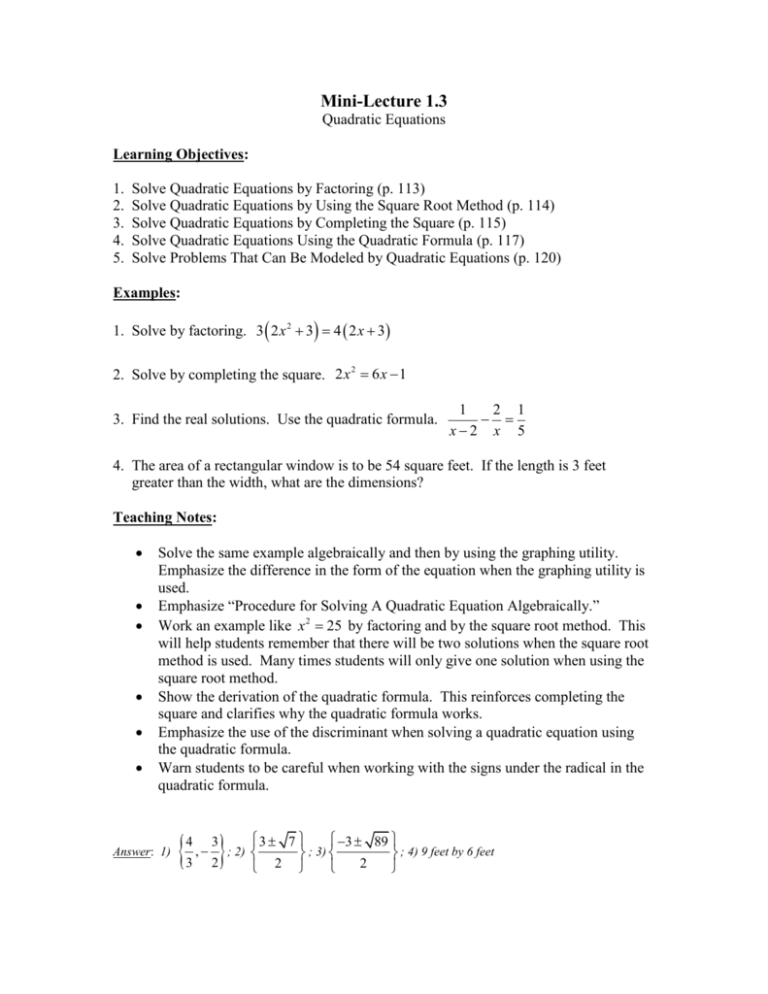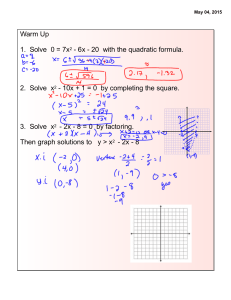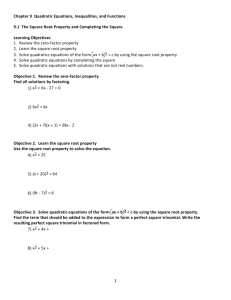Mini 1.3
advertisement

Mini-Lecture 1.3 Quadratic Equations Learning Objectives: 1. 2. 3. 4. 5. Solve Quadratic Equations by Factoring (p. 113) Solve Quadratic Equations by Using the Square Root Method (p. 114) Solve Quadratic Equations by Completing the Square (p. 115) Solve Quadratic Equations Using the Quadratic Formula (p. 117) Solve Problems That Can Be Modeled by Quadratic Equations (p. 120) Examples: 1. Solve by factoring. 3 2 x 2 3 4 2 x 3 2. Solve by completing the square. 2 x 2 6 x 1 3. Find the real solutions. Use the quadratic formula. 1 2 1 x2 x 5 4. The area of a rectangular window is to be 54 square feet. If the length is 3 feet greater than the width, what are the dimensions? Teaching Notes: Solve the same example algebraically and then by using the graphing utility. Emphasize the difference in the form of the equation when the graphing utility is used. Emphasize “Procedure for Solving A Quadratic Equation Algebraically.” Work an example like x 2 25 by factoring and by the square root method. This will help students remember that there will be two solutions when the square root method is used. Many times students will only give one solution when using the square root method. Show the derivation of the quadratic formula. This reinforces completing the square and clarifies why the quadratic formula works. Emphasize the use of the discriminant when solving a quadratic equation using the quadratic formula. Warn students to be careful when working with the signs under the radical in the quadratic formula. Answer: 1) 4 3 , 3 2 ; 2) 3 7 3 89 ; 3) ; 4) 9 feet by 6 feet 2 2








